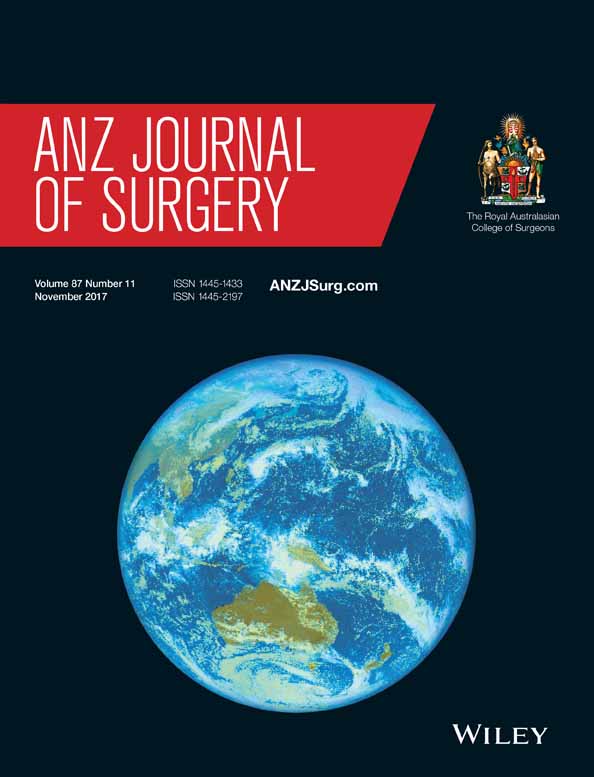Submucosal dissection has advantages over full-thickness transanal endoscopic microsurgery in selected rectal lesions
Abstract
Background
To establish the incidence of unsuspected malignancy in lesions excised through transanal endoscopic microsurgery (TEM) and examine the justification for full-thickness excision of all lesions thought to be benign pre-operatively.
Methods
Demographic, operative and pathology data of all patients undergoing TEM at a single institution were collected in a prospectively maintained database. Follow-up data were collected with a focus on polyp recurrence rates and outcome in patients found to harbour malignancy. For lesions thought to be benign pre-operatively, a submucosal excision was routinely performed.
Results
TEM was attempted in 156 cases between June 1999 and April 2013. Mean (standard deviation) patient age was 66.8 (2.1) years, with 111 males. Mean tumour size was 4.1 (1.6) cm, and mean height from anal verge was 10.4 (2.1) cm. In nine cases, the procedure was unable to be completed and in eight cases a deliberate full-thickness excision was performed. In 139 patients with a presumed benign lesion, mean operating time was 53.4 min. A total of 17 (12.2%) were found to harbour an unsuspected malignancy. Recurrent polyp was seen in 14 (11.7%) of 122 cases of benign pathology (mean follow-up 24.5 months) and was managed by endoscopic means in 10 patients. Mean length of stay was 1.2 days and complications occurred in 7% of cases. No patient with an unsuspected malignancy has developed recurrent disease (mean follow-up 43 months).
Conclusion
Submucosal TEM can result in low complication rates, short duration of surgery, short hospital stay and satisfactory recurrence rates when performed for presumed benign rectal tumours.




